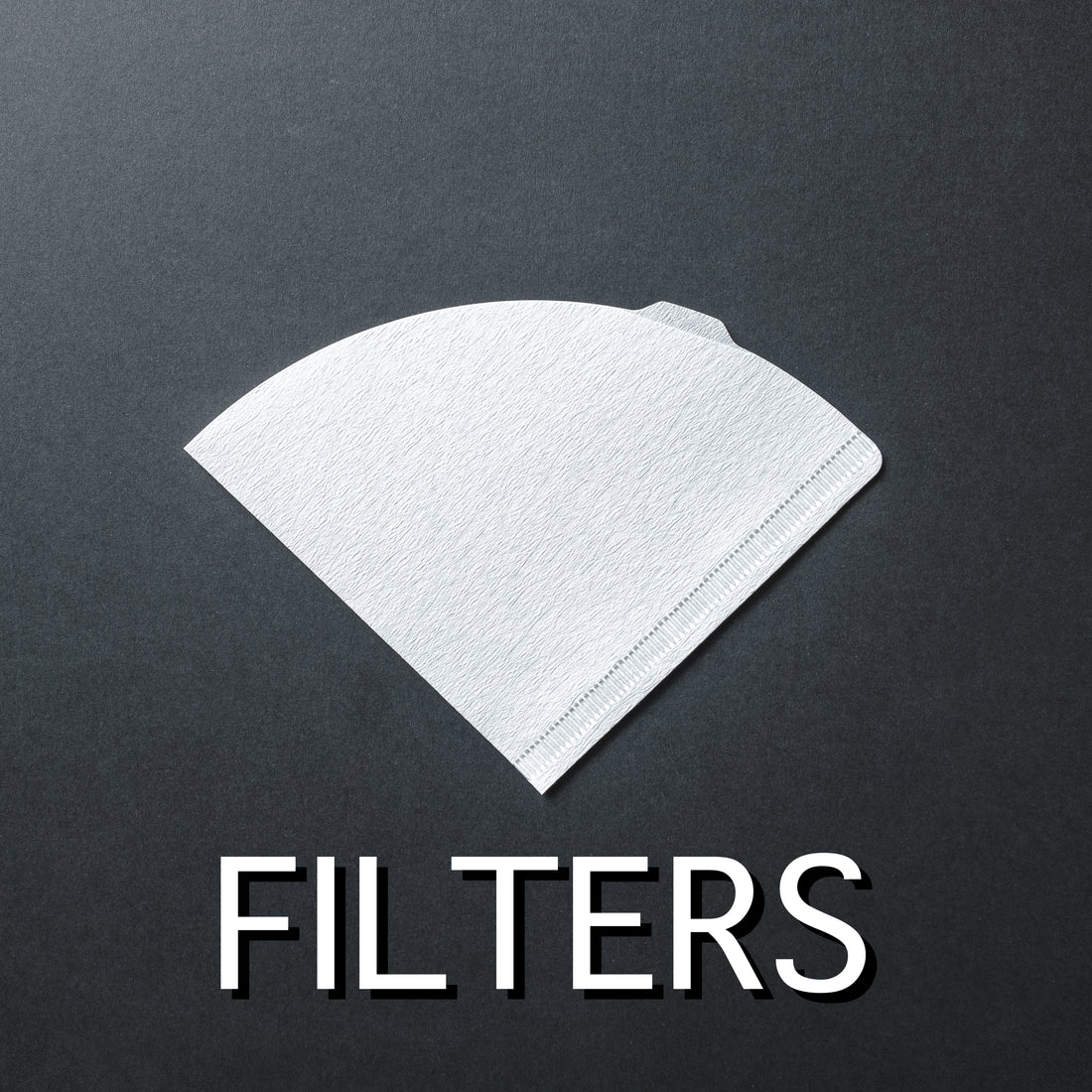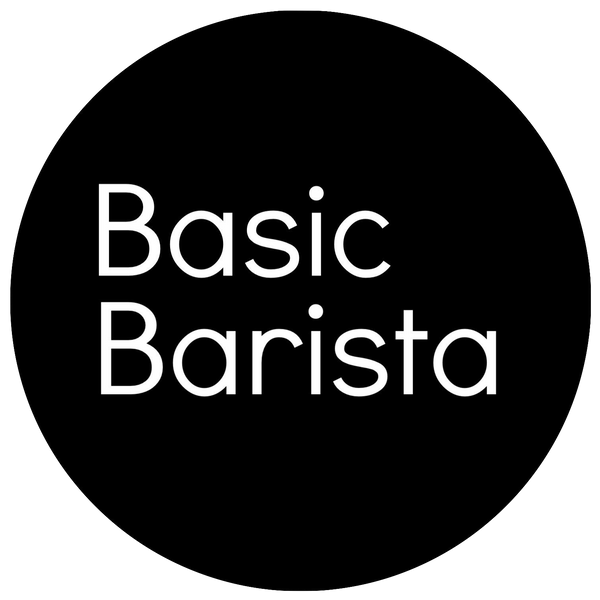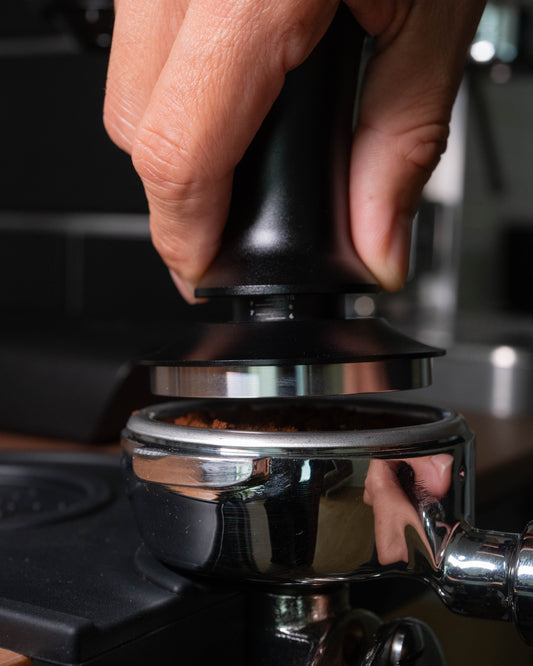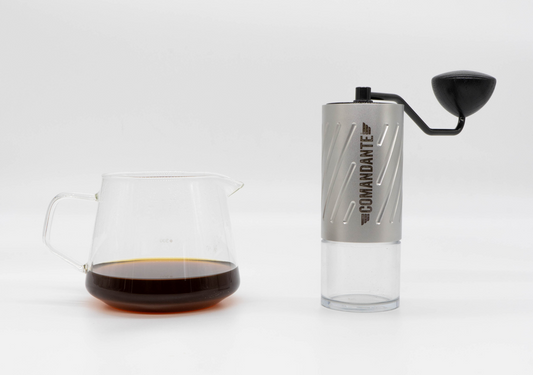
Introduction to coffee filters
Estimated read time: 4 minute
Share this article
There are many different coffee filters available, some in different materials and it is not uncommon to find some crazy shapes and designs out there.
When comparing different filters you can break it down in to material (Metal, Paper, Cloth and Ceramic) and then further by examining what type of material. Some metal filters are made by cutting holes with lasers while others rely on fine metal wires woven to create a fine mesh.
AeroPress Filters:
The AeroPress traditionally utilises paper filters but there are some other third party attachments that can result in a different taste, mouthfeel and set of flavours from your AeroPress. We sell the Able set of filters which are thin metal disks that fit in between the filter cap and the AeroPress chamber, just like a traditional paper filter. The Able set include 2 disks, they are similar dimensions with exception to their thickness and the size of the holes. The paper AeroPress filters release the least amount of particles and oils. This creates a smooth and clean cup of coffee followed by the 'Fine disk' which lets oils through and slightly more particles resulting in a much thicker body and heavy syrupy mouthfeel. The 'Standard disk' has larger holes resulting in more particles and oils being released and a different tasting cup of coffee altogether.
Another popular product on the market for the AeroPress is the Prismo. Created by Fellow Products, the Prismo is designed to replace the AeroPress filter cap. Essentially the Prismo is comprised of 2 parts, a metal filter (similar to the Able disks) and a pressurised valve that only releases liquid when you start plunging. The combination of these two components allow you to experiment with different styles of coffee. Using less water and a finer grind and the Prismo will let you build up pressure and make an espresso-style coffee. Or using the metal screen in conjunction with a paper filter can create some awesome combinations and crazy flavour profiles.
Conical Filters:
Conical filters are essentially one half circle folded in half with a seam holding the two sides together. There is a wide range of conical filters made from paper pulp to banana hemp fibres, they are dried and creped to create different textures and sometimes they are bleached or processed. All these different processing techniques are used to achieve a different taste profile or allow for a different style of brewing.
Usually before brewing you will need to fold over this seam to create a flush surface and ensure the filter does not open while brewing. It is important to note that not all drippers are at a perfect 60º angle and that you may need to fold this to create an angle better suited to your dripper.
Drawdown refers to the amount of time it takes for your brew water to brew and exit your pour over. A fast drawdown is when this happens too quickly and a slow drawdown is when this happens to slowly. Usually when faced with either a fast or slow drawdown you adjust the grind size to counter this and balance out the time of your brew. Instead of adjusting your grind size you can now use quicker or slower draw down filters to balance out your brew time. This then adds another variable to play around with and can allow you to control your brew in way you might not have considered before.
Hario have two main filters available, they are also by far the most popular filter papers on this list and the most readily available. You can find Hario filters available in boxes of 40 filters and packages of 100 filters. They look very similar but they are actually very different and you can tell them apart easily as the 100pk have a small tab at the top of the filter to make prying apart super easy (The Boxed 40's do not have this tab).
Cafec make a range of coffee brewing gear and tools. They are the creators of the Flower Dripper, roast profile filters and the Abaca Paper Filters. The Abaca Paper Filters are made from a non-wood Manila Hemp. These filters have a sweet and earthy paper taste and we found that when it came to drawdown time they preformed in between the Hario boxed 40's and Tabbed 100's.
Origami Filters are made by Cafec, funnily enough they are also very similar to the Hario boxed 40's. We speculate that these are made in the same factory but Hario dose not mention Cafec on any of the boxed packaging.
Flat Bottom Filters:
Kalita filters are made from thin circles that are dried in their famous 'wave' shape. The flat bottom means all of the coffee sits flat all of the time and there is minimal high points where as its conical counter parts funnel down towards a point at the very bottom making even saturation and extraction slightly more difficult to achieve.
The shape of the kalita dripper pushes the filters inwards maintaining the wave shape. This can create higher agitation when pouring close to the ridges and form small but visible vortex's in your brew. One way to avoid this effect is by pouring closer to the centre and only venturing off in a tighter circle around the centre. Pouring at a slower pace will lower your overall agitation.
Summary:
This can be a lot of information for anyone who is new to brewing filter coffee but that is the nature of coffee brewing. There will always be another filter, another variable to play with and along the way trying to keep up and perfect your brew can be intimidating at times but can also be rewarding. This blog post is a little bit different from the last blog posts, we tried to focus more so on taste and our personal findings were sprinkled in. Please remember that you may have different results to us and this isn't a bad thing! We encourage conversation and input, share with us your thoughts about filters and what your findings are on our instagram, YouTube, FaceBook.
Take it slow, enjoy the process and the coffee along the way :)










